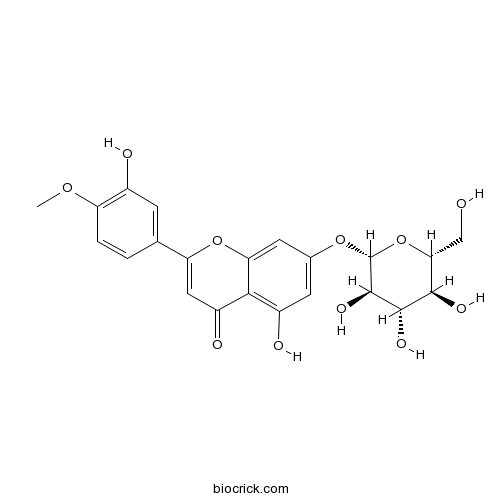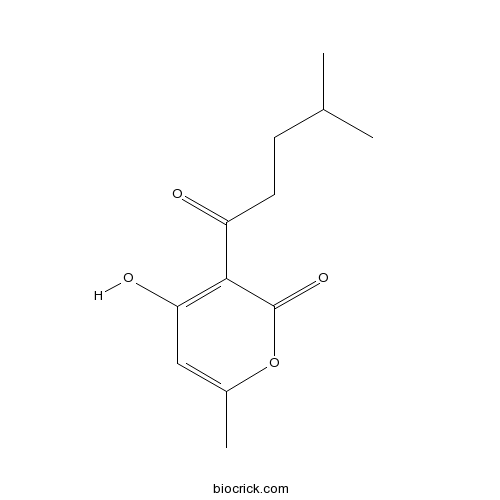Pogostemon cablin
Pogostemon cablin
1. The products in our compound library are selected from thousands of unique natural products; 2. It has the characteristics of diverse structure, diverse sources and wide coverage of activities; 3. Provide information on the activity of products from major journals, patents and research reports around the world, providing theoretical direction and research basis for further research and screening; 4. Free combination according to the type, source, target and disease of natural product; 5. The compound powder is placed in a covered tube and then discharged into a 10 x 10 cryostat; 6. Transport in ice pack or dry ice pack. Please store it at -20 °C as soon as possible after receiving the product, and use it as soon as possible after opening.

Natural products/compounds from Pogostemon cablin
- Cat.No. Product Name CAS Number COA
-
BCN5328
Diosmetin-7-O-beta-D-glucopyranoside20126-59-4
Instructions

-
BCN2696
Pogostone23800-56-8
Instructions

-
BCN4966
Patchouli alcohol5986-55-0
Instructions

Comparative proteomic analysis of Pogostemon cablin leaves after continuous cropping.[Pubmed: 30017744]
A proteomic approach was used to understand the molecular mechanisms underlying obstacles to the continuous cropping of Pogostemon cablin. We examined differences in protein abundance between control (CK) and continuously cropped (TR) P. cablin leaves at different time points (90, 150, and 210 days after culture). Comparative analysis by two-dimensional gel electrophoresis (2-DE) and mass spectrometry (MS) revealed 183 differentially expressed protein spots, of which 87 proteins or isoforms were identified using mass spectrometry. Among these differentially expressed proteins (DEPs), 50 proteins or isoforms showed increased abundance and 37 proteins or isoforms showed decreased abundance in the TR sample compared with the abundance in the CK sample. Bioinformatic tools were used to analyze the DEPs. These proteins were classified into 12 categories according to clusters of orthologous groups (COG) analysis, with the majority being involved in post-translational modification, protein turnover, and chaperones, followed by carbohydrate transport and metabolism, and finally, energy production and conversion. Protein-protein interactions revealed that 18 DEPs were involved in energy metabolism, 6 DEPs were involved in stress response, and 4 DEPs were involved in amino acid biosynthesis. Continuous cropping altered the expression of proteins related to energy metabolism, carbohydrate metabolism, and amino acid metabolism in P. cablin leaves. Among these processes, the most affected was energy metabolism, which may be pivotal for resistance to continuous cropping.
Lethal Effect and Behavioral Responses of Leaf-Cutting Ants to Essential Oil of Pogostemon cablin (Lamiaceae) and Its Nanoformulation.[Pubmed: 29995283]
None
Pogostone attenuates TNF-α-induced injury in A549 cells via inhibiting NF-κB and activating Nrf2 pathways.[Pubmed: 29966943]
Pogostone (PO), a major component of Pogostemon cablin, displays potent protective effects against lipopolysaccharide-induced acute lung injury (ALI) in mice. This study aimed to investigate the protective effect of PO on TNF-α-induced cell injury in human alveolar epithelial cells in vitro and its underlying mechanism. The cell viability was measured using the MTS method. The cell apoptosis was determined using flow cytometry. The activities of reactive oxygen species (ROS) were detected using a fluorescence microscope. The pro-inflammatory cytokines and antioxidant genes were assessed using reverse transcription-polymerase chain reaction. The protein expression of Kelch-like ECH-associated protein 1 (Keap1), nuclear factor erythroid 2-related factor 2 (Nrf2), nuclear factor of kappa light polypeptide gene enhancer in B-cells inhibitor-alpha (IκBα), and nuclear factor-kappa B (NF-κB) p65 was analyzed using the Western blot analysis. PO alleviated cell apoptosis and inhibited ROS production. It alleviated TNF-α-induced cell injury, suppressed the levels of inflammatory cytokines [interleukin (IL)-6, IL-1β, and IL-8], and enhanced the expression of antioxidant genes (quinine oxidoreductase 1, glutamate cysteine ligase catalytic subunit, heme oxygenase-1). It increased the expression of Keap1 and promoted the activation of Nrf2. However, the phosphorylation of IκBα and the nuclear expression of NF-κB p65 decreased. The anti-inflammatory and antioxidant effects of PO were abrogated following Nrf2 and NF-κB p65 knockdown. The results indicated a protective effect of PO against TNF-α-induced cell injury in A549 cells by modulating the balance between Nrf2 and NF-κB p65 signaling pathways. They verified PO as a promising anti-inflammatory adjuvant drug for treating ALI.
Colored shade nets induced changes in growth, anatomy and essential oil of Pogostemon cablin.[Pubmed: 29668798]
The purpose of this investigation was to determine the influence of colored shade nets on the growth, anatomy and essential oil content, yield and chemical composition of Pogostemon cablin. The plants were cultivated under full sunlight, black, blue and red nets. The harvesting was performed 5 months after planting and it was followed by the analysis of plant growth parameters, leaf anatomy, essential oil content, yield and chemical composition. The plants grown under red net have produced more leaf, shoot, total dry weight and leaf area. Plants cultivated under colored nets showed differences in morphological features. Plants maintained under red net had a higher leaf blade thickness and polar and equatorial diameter of the stomata ratio. Additionally, higher yield of essential oil in the leaves was observed under red and blue colored shade net. The essential oil of the plants grown under red net showed the highest relative percentage of patchoulol (66.84%). Therefore, it is possible using colored shade nets to manipulate P. cablin growth, as well as its essential oil production with several chemical compositions. The analyses of principal components allowed observing that pogostol has negative correlation with α-guaiene and α-bulnesene. There was difference in total dry weight and patchoulol content when the patchouli is cultured under the red colored shade nets.


